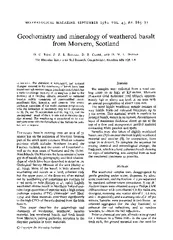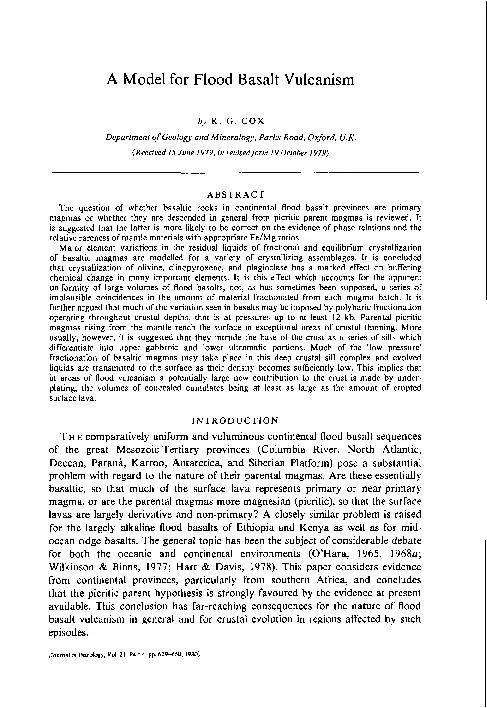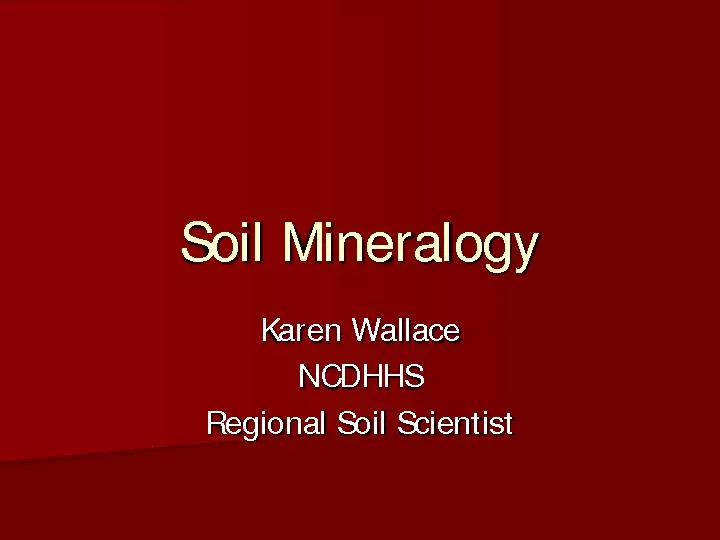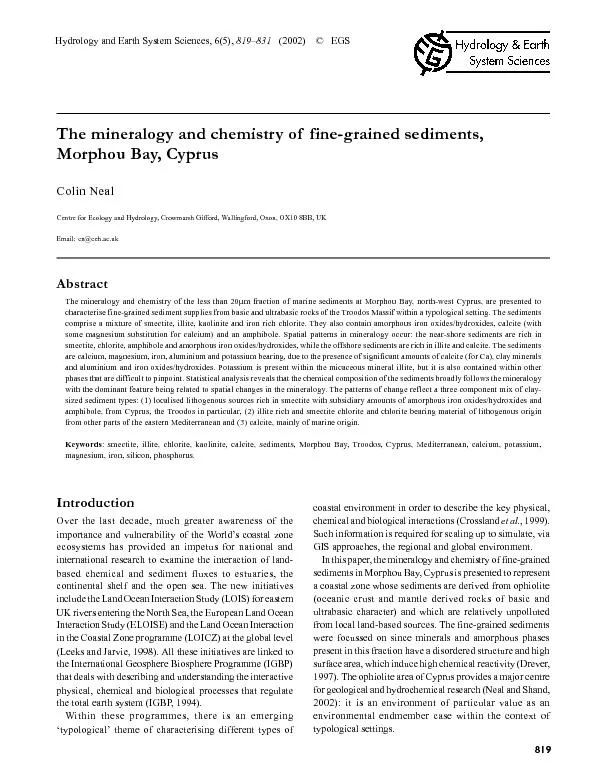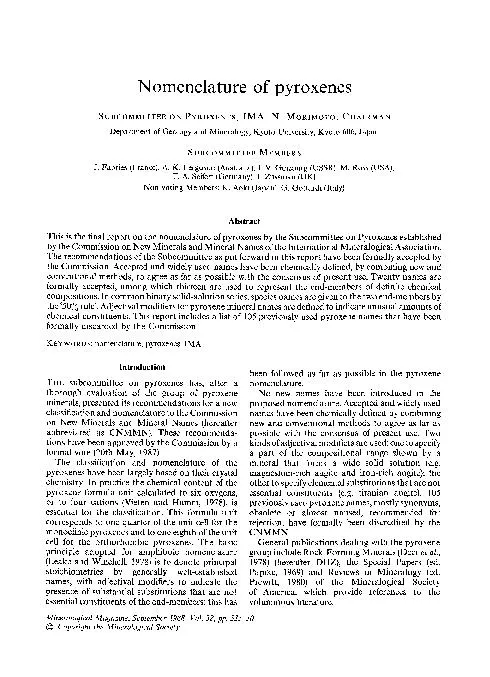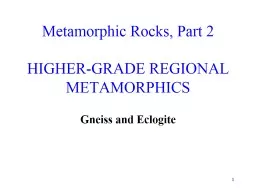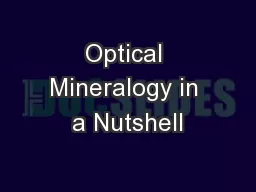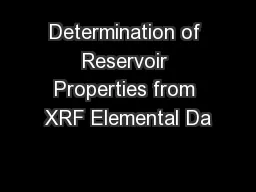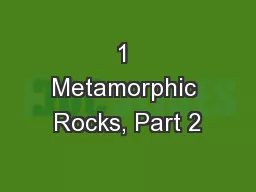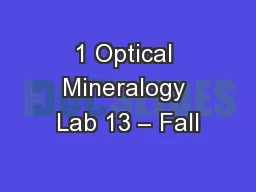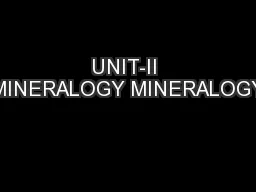PPT-1 Mineralogy Introduction
Author : calandra-battersby | Published Date : 2018-03-13
GLY 4200 Lecture 1 Fall 2017 2 Classical Definition of Mineral From Edward Salisbury Dana A body produced by the processes of inorganic nature having usually
Presentation Embed Code
Download Presentation
Download Presentation The PPT/PDF document "1 Mineralogy Introduction" is the property of its rightful owner. Permission is granted to download and print the materials on this website for personal, non-commercial use only, and to display it on your personal computer provided you do not modify the materials and that you retain all copyright notices contained in the materials. By downloading content from our website, you accept the terms of this agreement.
1 Mineralogy Introduction: Transcript
Download Rules Of Document
"1 Mineralogy Introduction"The content belongs to its owner. You may download and print it for personal use, without modification, and keep all copyright notices. By downloading, you agree to these terms.
Related Documents


